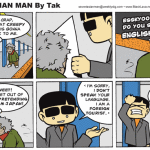MINNEAPOLIS (AP) _ It has been a reality check for Massive Open Online Courses.
The online courses that universities offer to the public were once hailed as an innovation that could provide free college education to the global masses. Now many in the industry are scaling back expectations, saying they don’t perform as well as supporters had hoped. Yet two Minnesota schools still see value in them and are pressing on, Minnesota Public Radio reported Monday (http://bit.ly/1mvemGB ).
“It’s a startling innovation in education,” said University of Minnesota Provost Karen Hanson. “And figuring out how best to deploy it … is something that’s learned through experience.”
The university offers more than a half-dozen MOOCs, while the College of St. Scholastica in Duluth offers three.
America’s fascination with the online courses began about two years ago when businesses teamed up with prestigious universities to produce the classes. Although online education had existed for years, MOOCs expanded its reach. With one professor able to teach more than 100,000 students online, they promised a revolution in higher education.
But results are often dismal. MOOCs often suffer from dropout rates above 90 percent. Most people taking them already have degrees. And participants don’t’ perform as well as students taking the same course in a traditional classroom.
One of biggest complaints is lack of interaction among students, instructors and peers. When the student-teacher ratio is thousands to one, and class members are spread out all over the world, students are reduced to exchanging questions and comments in online discussion forums.
But one professor who finds the huge scale a benefit is University of Minnesota graphic design professor Brand Hokanson. In his MOOC on creative problem solving, his students evaluated one another’s creative ideas. The large class size greatly increased the diversityof opinions, he said, and the anonymous nature of the critiques ensured they were honest.
“I have 3,000 guest critics,” Hokanson said. “That’s huge.”
The university does not grant academic credit for MOOCs.
St. Scholastica’s three courses aren’t as massive as some. The largest, anatomy and physiology, has enrolled about 5,000 students. They target working professionals in health care. Those who enroll can earn free continuing education credits.
“Our plans are not grand,” said Don Wortham, vice president for strategic initiatives. “We’re looking for ways to introduce segments of the consuming public to Scholastica, and we’ll do it a few hundred or a few thousand at a time _ and be very happy with that.”









